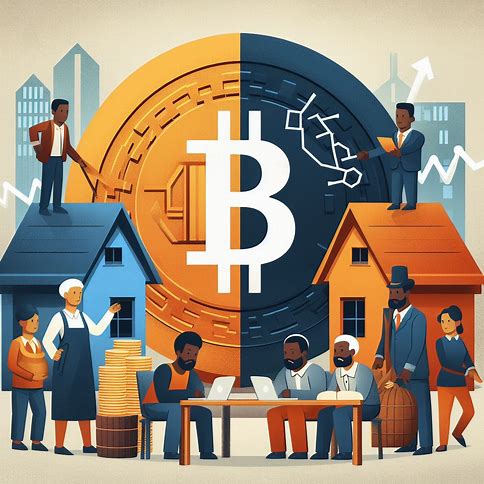The Bitcoin halving event is a unique feature built into the Bitcoin protocol. It occurs approximately every four years and has always been a topic of discussion and speculation in the crypto community. The question on everyone’s mind is: will the next Bitcoin halving lead to an increase in its price?
What is Bitcoin Halving?
When a new block is added to the Bitcoin blockchain, the miner who added the block is rewarded with a certain number of new Bitcoins. This reward is how new Bitcoins are introduced into circulation.
However, the number of new Bitcoins created in each block isn’t constant. Instead, it’s programmed to decrease over time in a process called halving. Specifically, the Bitcoin protocol is designed to cut the mining reward in half every 210,000 blocks, which takes around four years.
When Bitcoin first started, miners earned 50 BTC per block. After the first halving in 2012, this was reduced to 25 BTC. The second halving in 2016 reduced it to 12.5 BTC. The halving in May 2020, reduced it to 6.25 BTC. The most recent halving occured in 2024 which further reduced it to 3.125 BTC per block.
Impact of Halving on Price
With each halving, the supply of new Bitcoins entering circulation decreases. If demand for Bitcoin remains constant or increases, this reduction in supply could lead to an increase in price. It’s a bit like if half of all gold mines in the world suddenly stopped producing gold – if demand stayed the same, the price of gold would definitely go up.
Bitcoin’s price performance around the previous halving events
- First Halving (November 28, 2012): Bitcoin’s price rose from around $11 in November 2012 to a peak of $1,100 in November 2013.
- Second Halving (July 9, 2016): Bitcoin’s price was around $600-700 in the months before the halving. By December 2017, it had soared to nearly $20,000.
- Third Halving (May 11, 2020): Bitcoin’s price was around $8,000-9,000 in the weeks before the halving. By April 2021, it had climbed to over $60,000.
In each of these cases, we see a significant price increase in the months following the halving. Of course, correlation doesn’t necessarily mean causation. Many other factors, such as regulatory changes, institutional adoption, and overall market sentiment, also influence Bitcoin’s price.
The Counterargument
Historical data evidently support the idea that halving leads to price increase, but there are also counterarguments to consider.
One argument is that the effect of halving is already priced in by the market. Because the halving schedule is public knowledge, traders and investors can anticipate and plan for these events. As such, the actual halving event may not come as a surprise and may not have a significant immediate impact on price.
Another argument is that as Bitcoin’s market cap and overall trading volume grow, the significance of the halving may decrease. In Bitcoin’s early days, the halving had a more pronounced effect on supply. But as the market matures, the relative impact of each halving may lessen.
There’s also the question of miner profitability. As the block reward decreases, some miners may find it less profitable to mine Bitcoin, especially if the price doesn’t increase enough to compensate. This could lead to a decrease in the network’s hash rate (the total computational power of the network) as some miners drop off. A significant drop in hash rate could make the network more vulnerable to attack, which could negatively affect price.
Also Read: Bitcoin spark (BTCS) price prediction 2024, 2025-2030
Factors That Can Affect the Impact of Halving
There are several other factors that could amplify or mitigate the impact of Halving on Bitcoin’s price
- Institutional Adoption: One of the biggest drivers of Bitcoin’s price in recent years has been increasing institutional adoption. If more companies, investment funds, and financial institutions start buying and holding Bitcoin, this increased demand could amplify the price effect of the reduced supply from the halving.
- Regulatory Environment: The regulatory environment for cryptocurrencies is still evolving. Favorable regulations, such as clearer legal frameworks or the approval of a Bitcoin ETF, could boost demand and price. On the other hand, harsh regulations or crackdowns could stifle demand and negate the halving’s impact.
- Macroeconomic Factors: Bitcoin doesn’t exist in isolation from the broader financial system. Major economic events, like a global recession or a significant shift in monetary policy, could affect Bitcoin’s price regardless of the halving.
- Technological Developments: Improvements to Bitcoin’s protocol, such as upgrades that increase privacy or scalability, could make it more attractive and drive up demand. Conversely, the emergence of a superior competing cryptocurrency could draw demand away from Bitcoin.
- Media and Public Perception: The media narrative and public perception around Bitcoin can heavily influence its price. If the halving event generates a lot of positive media attention and public interest, it could drive up demand and price.
What to Expect in 2024
The Bitcoin halving occured in May 2024 dropping the block reward from 6.25 BTC to 3.125 BTC.
If the historical pattern holds, we could see a significant price increase in the months following the halving. However, given the maturation of the Bitcoin market and the increasing importance of the factors mentioned above, the effect may be less dramatic than in previous halvings.
Note that the price increase may not happen immediately after the halving. In the previous halving events, the significant price increases happened several months after the event.
Even if the halving does lead to a price increase, it’s likely to be accompanied by significant ups and downs along the way.
How to Prepare for the Halving
- Do Your Research: Understand what the halving is, how it works, and how it could potentially affect the market. But also be aware of the other factors that influence Bitcoin’s price.
- Have a Long-Term Perspective: If you believe in the long-term value proposition of Bitcoin, the short-term volatility around the halving may be less concerning. Focus on the long game.
- Diversify Your Portfolio: As with any investment, it’s not wise to put all your eggs in one basket. Consider Bitcoin as part of a diversified portfolio of investments.
- Manage Your Risk: Be prepared for volatility and have a risk management strategy in place. This could include setting stop-losses or taking profits at certain levels.
- Stay Informed: Keep an eye on news and developments in the Bitcoin space, especially leading up to the halving. But be cautious of hype and always verify your sources.
Key Takeaways
1. Bitcoin halving is an event that occurs approximately every four years, where the reward for mining new blocks is cut in half.
2. The theory is that as the supply of new Bitcoins decreases, if demand remains constant or increases, the price of Bitcoin should go up.
3. Historical data shows significant price increases in the months following the previous halvings.
4. However, correlation does not necessarily imply causation, and many other factors influence Bitcoin’s price, such as regulations, institutional adoption, and overall market sentiment.
5. Some argue that the effect of the halving is already priced in by the market, as the halving schedule is public knowledge.
6. As Bitcoin’s market cap and trading volume grow, the relative impact of each halving may decrease.
7. The halving could affect miner profitability, potentially leading to a decrease in the network’s hash rate if the price doesn’t increase enough to compensate.
8. Factors that could amplify or mitigate the halving’s impact include institutional adoption, the regulatory environment, macroeconomic factors, technological developments, and media and public perception.
9. For investors, preparation for the halving should involve research, a long-term perspective, portfolio diversification, risk management, and staying informed while being cautious of hype.
10. Regardless of short-term price movements, the Bitcoin halving remains a significant part of Bitcoin’s design and a reminder of its revolutionary potential.
Frequently Asked Questions
1. What is Bitcoin halving?
The Bitcoin halving is an event that occurs approximately every four years, or every 210,000 blocks, where the reward for mining new blocks is cut in half. This means that the rate at which new Bitcoins are introduced into circulation is reduced.
2. When is the next Bitcoin halving?
The next Bitcoin halving is expected to occur in may 2028. The exact date depends on the speed at which new blocks are mined.
3. How has the price of Bitcoin responded to previous halvings?
Historical data shows that Bitcoin’s price has increased significantly in the months following the previous halvings. However, it’s important to note that many other factors also influence Bitcoin’s price.
4. Is the halving’s effect on price guaranteed?
No, the effect of the halving on Bitcoin’s price is not guaranteed. While the theory suggests that a decrease in supply should lead to an increase in price if demand remains constant or increases, many other factors can influence the price.
5. Could the halving lead to a decrease in Bitcoin’s price?
While it’s less likely, it’s possible that the halving could lead to a decrease in Bitcoin’s price. This could happen if, for example, the halving causes a significant drop in miner profitability, leading to a decrease in the network’s hash rate and security.
6. Do other cryptocurrencies have halving events?
Some other cryptocurrencies that use a similar mining model to Bitcoin also have halving events. However, the specifics (such as the frequency and the percentage of the reward reduction) can vary.
7. How does halving affect Bitcoin miners?
The halving reduces the reward miners receive for adding new blocks. This can affect miner profitability, especially if the price of Bitcoin doesn’t increase enough to compensate for the reduced reward.
8. Is halving the only factor that affects Bitcoin’s price?
No, the halving is just one of many factors that can influence Bitcoin’s price. Other important factors include regulations, institutional adoption, macroeconomic conditions, technological developments, and market sentiment.
9. Where can I learn more about the technical details of the Bitcoin halving?
The Bitcoin halving is a part of the Bitcoin protocol, which is described in the original Bitcoin whitepaper by Satoshi Nakamoto. There are also many online resources, such as technical blogs and forums, where the halving is discussed in more detail.
10. How can I stay updated on news and developments related to the halving?
There are many cryptocurrency news websites, blogs, and social media accounts that cover developments related to the Bitcoin halving. However, it’s important to be cautious of hype and to verify information from multiple reliable sources.
11. What is the long-term significance of Bitcoin halving?
Beyond its potential short-term impact on price, the Bitcoin halving is significant as a part of Bitcoin’s overall design. It’s a key mechanism in controlling the supply of Bitcoin over time and is an important factor in Bitcoin’s value proposition as a scarce digital asset.










